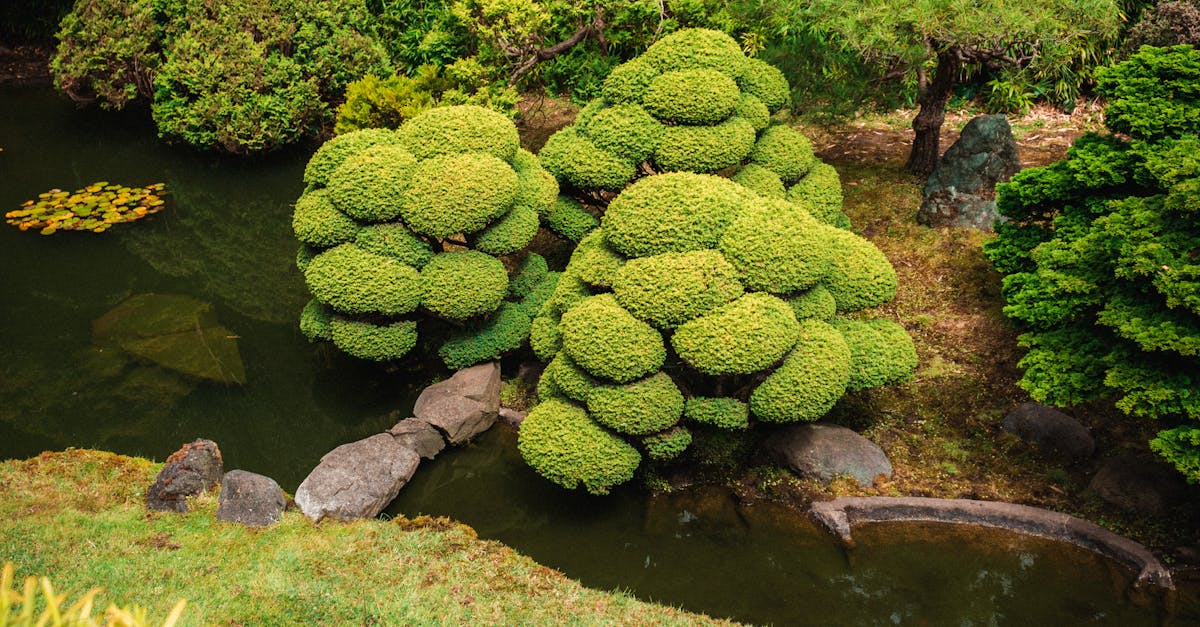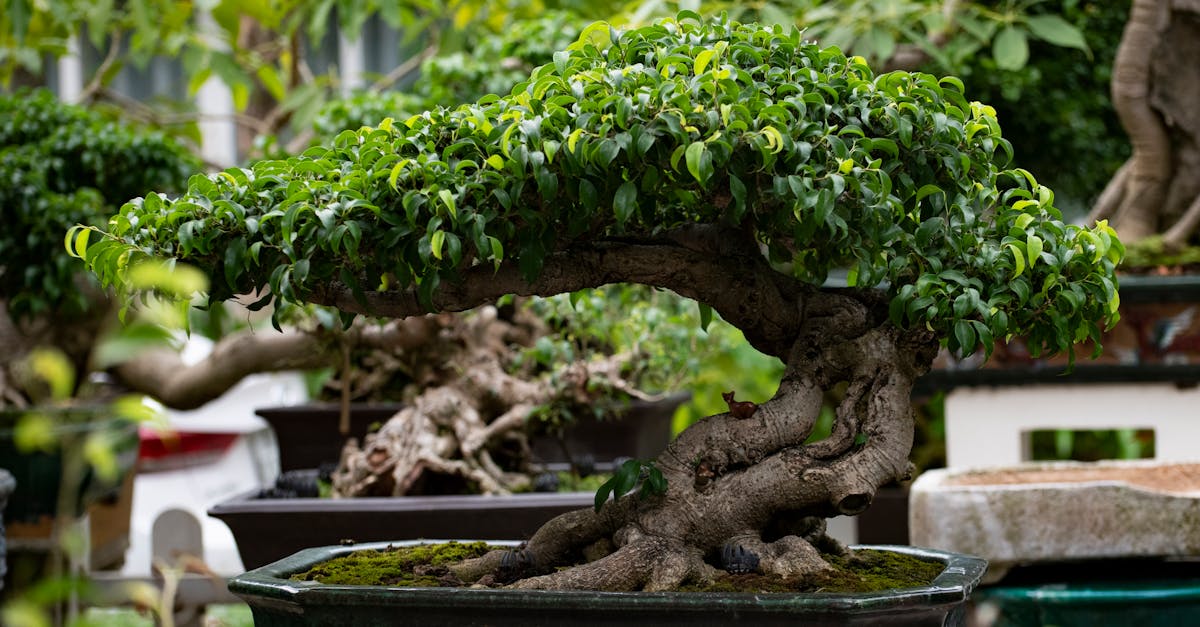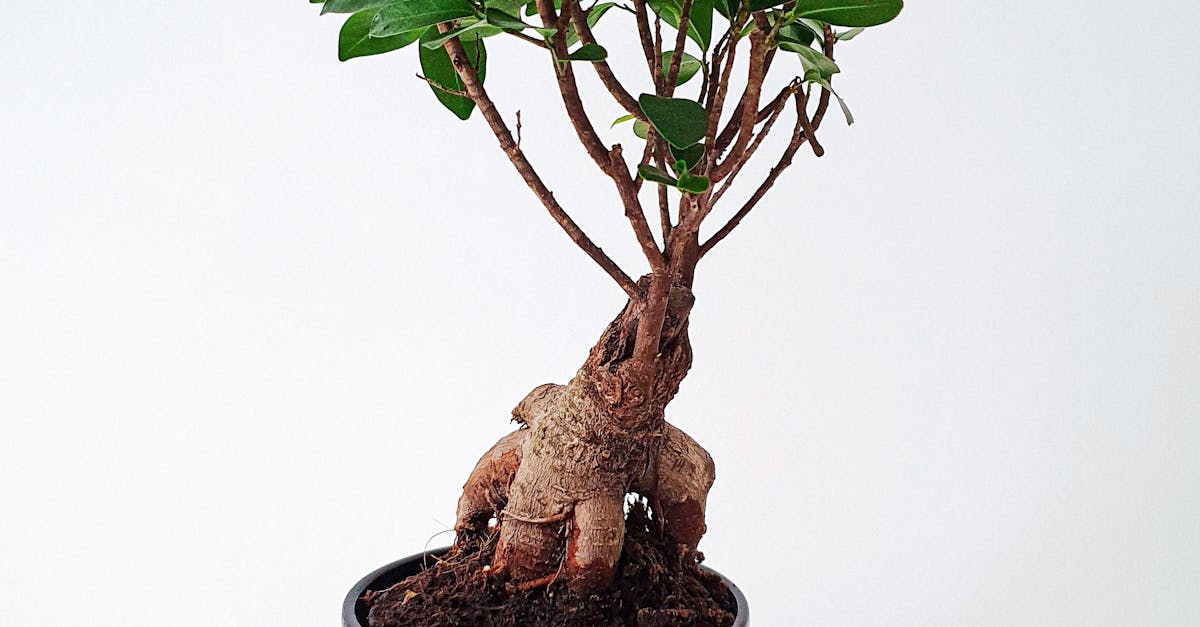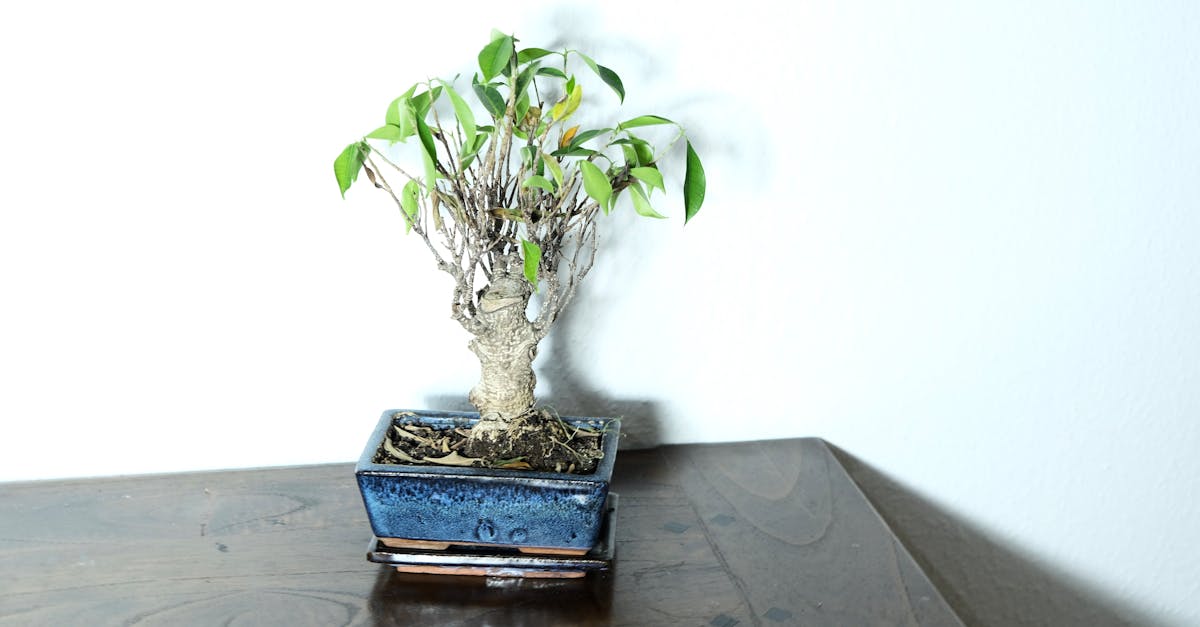Preserving the Beauty of Bonsai: A Guide to Insect Damage Management

Insect infestations can pose a significant threat to the health and beauty of bonsai trees. Early detection and prompt treatment are crucial for successful pest management. This comprehensive guide will provide you with the knowledge and techniques to recognize, treat, prevent, and recover your bonsai from insect damage, ensuring the longevity and vitality of your prized trees.
Throughout this article, we will delve into the various signs of insect infestation, explore effective treatment options, and discuss proactive measures to minimize the risk of future infestations. We will also provide guidance on assessing the damage, restoring the tree’s health, and preventing re-infestation. By understanding the key principles of insect damage management, you can protect and preserve the beauty and health of your bonsai for years to come.
1. Recognizing Insect Damage on Bonsai
Early detection of insect damage is crucial for the health and preservation of bonsai trees. Regular inspection of your bonsai is essential to identify any signs of infestation. Here are some common signs to watch out for:
- Wilting leaves: Wilting or yellowing leaves can indicate that the plant is under stress from insect feeding.
- Discoloration: Discolored or spotted leaves may be a sign of insect infestation.
- Sticky residue: Aphids and scale insects secrete a sticky substance called honeydew, which can cover the leaves and stems of the plant.
- Visible insects: Inspect your bonsai carefully for any visible insects, such as aphids, scale, or mealybugs. These pests can be found on the leaves, stems, or branches of the tree.
Accurate identification of the insect pest is important for selecting the appropriate treatment method. Familiarize yourself with the specific signs and symptoms caused by different insect pests to ensure effective management. By promptly addressing insect damage, you can minimize the impact on your bonsai and prevent further damage.
Signs of Insect Infestation
Signs of Insect Infestation: Early Detection for Bonsai Health
In order to effectively address insect damage on bonsai trees, early detection is crucial. Regular and thorough inspection of your bonsai is key to identifying any signs of infestation at an early stage, allowing for prompt treatment and minimizing the risk of severe damage to your tree.
Here are some common signs to watch out for:
- Wilting leaves: When insects feed on bonsai leaves, they can disrupt the plant’s ability to absorb water and nutrients, leading to wilting or yellowing leaves.
- Discoloration: Discolored or spotted leaves may indicate that the plant is under attack from insects. These spots can range in color from yellow to brown or black, depending on the type of insect and the severity of the infestation.
- Sticky residue: Some insects, such as aphids and scale, secrete a sticky substance called honeydew. This residue can attract ants and other pests, and it can also block sunlight from reaching the plant’s leaves, affecting photosynthesis.
- Visible insects: Inspect your bonsai carefully for any visible insects, such as aphids, scale, or mealybugs. These pests can be found on the leaves, stems, or branches of the tree. Identifying the specific type of insect present will help you determine the most appropriate treatment method.
By regularly inspecting your bonsai and being aware of these signs of insect infestation, you can take prompt action to protect the health and beauty of your tree.
Identifying Common Insect Pests
Identifying Common Insect Pests on Bonsai Trees
Accurate identification of the insect pest affecting your bonsai is essential for selecting the most effective treatment method. Different types of insects cause specific signs and symptoms on bonsai trees. Here are some common insect pests to be aware of:
- Aphids: These small, soft-bodied insects can be green, black, or brown. They feed on the sap of leaves and stems, causing wilting, yellowing, and stunted growth.
- Scale: Scale insects are small, immobile insects that attach themselves to the stems and leaves of plants. They have a hard outer shell that protects them from pesticides, making them difficult to control.
- Mealybugs: Mealybugs are small, white insects that feed on the sap of plants. They secrete a white, cottony substance that can cover the leaves and stems of the plant.
- Spider mites: Spider mites are tiny, spider-like pests that feed on the sap of leaves. They can cause leaves to turn yellow, brown, or bronze, and can eventually lead to defoliation.
- Thrips: Thrips are small, slender insects that feed on the leaves and flowers of plants. They can cause leaves to become discolored and distorted.
Knowing the specific type of insect pest affecting your bonsai will help you choose the most appropriate treatment method. Some treatments are more effective against certain types of insects, so accurate identification is key to successful pest management.
2. Treatment Options for Insect Damage

Treatment Options for Insect Damage on Bonsai Trees
Once you have identified the type of insect pest affecting your bonsai, you can select the most appropriate treatment method. There are both organic and chemical treatment options available, and the best choice will depend on the severity and type of infestation.
Organic Methods:
- Neem oil: Neem oil is a natural pesticide that can be used to control a wide range of insect pests. It is relatively safe for use on bonsai trees, and it has both insecticidal and fungicidal properties.
- Insecticidal soap: Insecticidal soap is another natural pesticide that can be used to control insect pests on bonsai trees. It is made from fatty acids, and it kills insects by suffocating them.
- Horticultural oils: Horticultural oils are petroleum-based oils that can be used to control insect pests on bonsai trees. They work by smothering the insects and their eggs.
Chemical Pesticides:
- Systemic insecticides: Systemic insecticides are absorbed by the plant and distributed throughout its tissues. This makes them effective against insects that feed on the leaves or stems of the plant.
- Contact insecticides: Contact insecticides kill insects on contact. They are most effective against insects that are exposed to the spray, such as aphids and spider mites.
When using chemical pesticides, it is important to follow the instructions on the label carefully. Chemical pesticides can be harmful to humans and animals if they are not used properly.
Organic Methods
Organic Methods for Insect Pest Control on Bonsai Trees
Organic methods of insect pest control are a natural and eco-friendly way to protect your bonsai trees from pests. These methods are less harmful to the environment and to humans and animals than chemical pesticides, and they can be just as effective.
Some common organic methods of insect pest control for bonsai trees include:
- Neem oil: Neem oil is a natural pesticide that is extracted from the neem tree. It has insecticidal, fungicidal, and antibacterial properties, and it is effective against a wide range of insect pests.
- Insecticidal soap: Insecticidal soap is made from fatty acids, and it kills insects by suffocating them. It is effective against a variety of soft-bodied insects, such as aphids, mealybugs, and spider mites.
- Horticultural oils: Horticultural oils are petroleum-based oils that can be used to control insect pests on bonsai trees. They work by smothering the insects and their eggs.
To use organic methods of insect pest control on your bonsai trees, it is important to apply the treatment regularly and to monitor your trees carefully for signs of pests. If you see any pests, you can spot-treat them with an organic pesticide. It is also important to keep your bonsai trees healthy and vigorous, as this will help them to resist pests and diseases.
By using organic methods of insect pest control, you can protect your bonsai trees from pests without harming the environment or your health.
Chemical Pesticides
3. Preventing Insect Damage on Bonsai
Preventing Insect Damage on Bonsai Trees
In addition to treating insect infestations, there are also a number of proactive measures you can take to prevent insect damage on your bonsai trees. These measures will help to keep your trees healthy and vigorous, making them less susceptible to pests.
Here are some tips for preventing insect damage on bonsai trees:
- Proper Watering and Fertilizing: Bonsai trees need to be watered and fertilized regularly to stay healthy. However, overwatering or overfertilizing can weaken your trees and make them more susceptible to pests. Water your trees when the soil is dry to the touch, and fertilize them according to the instructions on the fertilizer label.
- Companion Planting: Companion planting is a technique that involves planting different species of plants together to benefit each other. Some plants, such as marigolds and nasturtiums, are known to repel insects. Planting these plants around your bonsai trees can help to deter pests.
- Good Hygiene: Good hygiene is important for preventing insect damage on bonsai trees. Remove any dead leaves or debris from your trees, and keep the area around your trees clean. This will help to reduce the number of hiding places for insects.
- Regular Inspection: Regularly inspect your bonsai trees for signs of pests. If you catch an infestation early, you can usually treat it quickly and easily. Look for signs of insects, such as wilting leaves, discoloration, sticky residue, and visible insects.
By following these tips, you can help to prevent insect damage on your bonsai trees and keep them healthy and beautiful.
Proper Watering and Fertilizing
Proper Watering and Fertilizing for Pest Prevention on Bonsai Trees
Proper watering and fertilizing are essential for maintaining the health and vigor of bonsai trees, which makes them less susceptible to pests. Here’s how these practices contribute to pest prevention:
Watering:
- Avoid overwatering: Overwatering can weaken bonsai trees and make them more susceptible to root rot and other diseases. Water your trees only when the soil is dry to the touch. Bonsai trees prefer to dry out slightly between waterings.
- Use well-draining soil: Bonsai trees need well-draining soil to prevent waterlogging. Choose a soil mix that is specifically designed for bonsai trees, or create your own mix using a combination of akadama, pumice, and lava rock.
- Water deeply: When you water your bonsai tree, water it deeply so that the water reaches all of the roots. This will help to prevent the roots from drying out and becoming stressed.
Fertilizing:
- Fertilize regularly: Bonsai trees need to be fertilized regularly to provide them with the nutrients they need to grow healthy and strong. Fertilize your trees according to the instructions on the fertilizer label.
- Use a balanced fertilizer: Choose a fertilizer that is balanced in nitrogen, phosphorus, and potassium. Nitrogen promotes leaf growth, phosphorus promotes root growth, and potassium helps to strengthen the plant’s overall health.
- Avoid overfertilizing: Overfertilizing can burn the roots of your bonsai tree and make it more susceptible to pests. Always follow the instructions on the fertilizer label.
By following these tips for proper watering and fertilizing, you can help to keep your bonsai trees healthy and vigorous, making them less susceptible to pests.
Companion Planting
Companion Planting for Pest Prevention on Bonsai Trees
Companion planting is a technique that involves planting different species of plants together to benefit each other. Some plants, such as marigolds and nasturtiums, are known to repel insects. Planting these plants around your bonsai trees can help to deter pests and create a more pest-unfavorable environment.
Here are some tips for companion planting with bonsai trees:
- Choose plants that are known to repel insects. Some good choices for companion planting with bonsai trees include marigolds, nasturtiums, lavender, basil, and rosemary. These plants release scents that insects find unpleasant, which helps to keep them away from your bonsai trees.
- Plant companion plants around your bonsai trees. When planting companion plants, place them close to your bonsai trees so that they can release their insect-repelling scents. You can plant companion plants in the same pot as your bonsai tree, or you can plant them in separate pots and place them near your bonsai tree.
- Keep companion plants healthy. In order for companion plants to be effective at repelling insects, they need to be healthy themselves. Water and fertilize your companion plants regularly, and remove any dead or diseased leaves.
By companion planting with insect-repelling plants, you can help to create a more pest-unfavorable environment around your bonsai trees and reduce the risk of insect infestations.
4. Recovering a Bonsai from Insect Damage

Recovering a Bonsai from Insect Damage
With proper treatment and care, bonsai trees can recover from insect damage and regain their health and beauty. Here are some steps to follow when recovering a bonsai from insect damage:
- Assess the damage: Once you have treated the insect infestation, assess the damage to your bonsai tree. Remove any dead or damaged leaves, branches, or roots. You may also need to prune back some of the healthy growth to help the tree focus its energy on recovery.
- Provide optimal growing conditions: Bonsai trees need optimal growing conditions to recover from insect damage. Make sure your tree is getting enough sunlight, water, and nutrients. You may also want to consider using a fertilizer to help the tree rebuild its strength.
- Monitor the tree closely: After you have treated the insect infestation and provided optimal growing conditions, monitor your bonsai tree closely for any signs of re-infestation. If you see any insects, treat them immediately. You should also continue to monitor the tree’s health and make sure that it is recovering well.
With patience and care, your bonsai tree can recover from insect damage and regain its health and beauty. By following these steps, you can help your tree to thrive for many years to come.
Assessing the Damage
Assessing the Damage on Bonsai Trees After Insect Infestation
Once you have treated the insect infestation on your bonsai tree, it is important to assess the damage and determine the necessary steps for recovery. Here are some things to look for:
- Leaves: Inspect the leaves of your bonsai tree for any signs of damage, such as wilting, yellowing, or browning. Remove any dead or damaged leaves, as they can provide a breeding ground for insects and diseases.
- Branches: Check the branches of your bonsai tree for any signs of damage, such as cracks, splits, or holes. Remove any damaged branches, as they can weaken the tree and make it more susceptible to further damage.
- Roots: Inspect the roots of your bonsai tree for any signs of damage, such as rot or decay. Remove any damaged roots, and repot your tree in fresh soil.
- Overall health: Take a step back and assess the overall health of your bonsai tree. Is the tree still vigorous and growing, or does it appear weak and stressed? If the tree is weak or stressed, you may need to provide additional care, such as fertilizer or water.
Once you have assessed the damage to your bonsai tree, you can begin to take steps to help it recover. This may involve pruning affected areas, addressing any underlying health issues, and providing optimal growing conditions.
Post-Treatment Care
Post-Treatment Care for Bonsai Trees After Insect Infestation
After you have treated your bonsai tree for an insect infestation, it is important to provide optimal growing conditions to help it recover and prevent re-infestation. Here are some things to keep in mind:
- Light: Bonsai trees need plenty of sunlight to thrive. Place your tree in a location where it will receive at least 6 hours of sunlight per day.
- Water: Water your bonsai tree regularly, but avoid overwatering. Allow the soil to dry out slightly between waterings.
- Nutrients: Fertilize your bonsai tree regularly to provide it with the nutrients it needs to grow healthy and strong. Use a fertilizer that is specifically designed for bonsai trees.
- Monitoring: Monitor your bonsai tree closely for any signs of pest recurrence. If you see any insects, treat them immediately. You should also continue to monitor the tree’s overall health and make sure that it is recovering well.
By providing optimal growing conditions and monitoring your bonsai tree closely, you can help it to recover from an insect infestation and prevent re-infestation.
5. Conclusion
Conclusion: Effective Insect Damage Management for Bonsai Trees
Insect damage is a common problem for bonsai trees, but it can be effectively addressed with prompt identification, proper treatment, and preventative measures. By understanding the signs of infestation, treatment options, and recovery strategies, bonsai enthusiasts can protect and restore the health of their prized trees.
Early detection is crucial for successful insect damage management. Regular inspection of bonsai trees allows for the early identification of infestations, enabling prompt treatment and minimizing damage. Accurate identification of the insect pest is also essential for selecting the most appropriate treatment method.
Various treatment options are available to combat insect infestations on bonsai trees, including both organic and chemical methods. Organic methods, such as neem oil and insecticidal soap, provide eco-friendly pest control, while chemical pesticides may be necessary for severe infestations. The choice of treatment method should consider the type and severity of the infestation.
In addition to treatment, preventative measures can minimize the risk of insect infestations on bonsai trees. Proper watering and fertilization practices maintain optimal plant growth, making trees less susceptible to pests. Companion planting with insect-repelling plants creates a pest-unfavorable environment around the bonsai. Regular inspection and monitoring allow for early detection and prompt action against any potential infestations.
With proper care and attention, bonsai enthusiasts can effectively manage insect damage and maintain the health and beauty of their bonsai trees. By implementing the strategies outlined in this article, bonsai enthusiasts can protect their trees from pests and ensure their long-term vitality.
Key Takeaways
Key Takeaways: Insect Damage Management in Bonsai
- Early detection: Regular inspection of bonsai trees is crucial for early detection of insect infestations. Prompt identification of the insect pest allows for targeted treatment, minimizing damage to the tree.
- Proper identification: Accurate identification of the insect pest is essential for selecting the most appropriate treatment method. Different types of insect pests have specific signs and symptoms, and effective treatment depends on correctly identifying the pest.
- Treatment options: A range of treatment options is available to combat insect infestations on bonsai trees, including both organic and chemical methods. Organic methods, such as neem oil and insecticidal soap, provide eco-friendly pest control, while chemical pesticides may be necessary for severe infestations.
- Preventative measures: Proactive measures can significantly reduce the risk of insect infestations on bonsai trees. Proper watering and fertilization practices promote optimal plant growth, making trees less susceptible to pests. Companion planting with insect-repelling plants creates an unfavorable environment for insects.
- Post-treatment care: After treating an insect infestation, providing optimal growing conditions, monitoring the tree for any signs of pest recurrence, and addressing any underlying health issues is crucial for the bonsai’s recovery.
- Long-term care: Ongoing care and attention are essential to maintain the health and beauty of bonsai trees. Regular inspection, monitoring, and appropriate cultural practices help prevent future insect infestations and ensure the long-term vitality of bonsai trees.
Additional Resources
Additional Resources for Bonsai Care and Pest Management
In addition to the information provided in this article, there are many other reputable resources available to help you learn more about bonsai care and pest management. Here are a few recommendations:
- Websites:
- American Bonsai Society: https://www.盆栽.org/
- Bonsai Empire: https://www.bonsaiempire.com/bonsai-care
- Bonsai Today: https://www.bonsaitoday.com/
- Books:
- The Complete Book of Bonsai: The Essential Guide to Care and Cultivation by Peter Adams
- Bonsai: The Art of Growing and Maintaining Miniature Trees by John Yoshio Naka
- Bonsai Pest and Disease Handbook by Peter Chan
- Forums:
- Bonsai Nut: https://www.bonsainut.com/forums/
- Bonsai Forum: https://www.bonsaiforum.com/
- Reddit Bonsai: https://www.reddit.com/r/bonsai/
These resources offer a wealth of information on all aspects of bonsai care, including pest management. They can provide you with additional insights, support, and inspiration as you care for your bonsai trees.
Quiz: Test Your Understanding of Insect Damage Management in Bonsai
Multiple Choice
- Which of the following is the first step in insect damage management for bonsai trees?
(a) Chemical treatment (b) Early detection (c) Preventative measures (d) Post-treatment care
- What is the purpose of companion planting in bonsai care?
(a) To improve soil fertility (b) To create a pest-unfavorable environment (c) To attract beneficial insects (d) To increase water retention
- Which of the following is NOT a sign of insect infestation on bonsai trees?
(a) Wilting leaves (b) Sticky residue (c) Healthy new growth (d) Visible insects
True/False
- Chemical pesticides should always be the first choice for treating insect infestations on bonsai trees.
- Organic methods of insect pest control are less effective than chemical methods.
- Regular inspection of bonsai trees can help prevent insect infestations.
Answer Key
Multiple Choice
- (b)
- (b)
- (c)
True/False
- False
- False
- True
Answer Key
Multiple Choice
- (b)
- (b)
- (c)
True/False
- False
- False
- True






